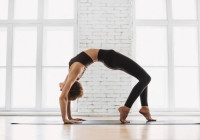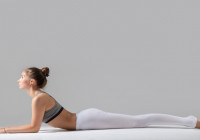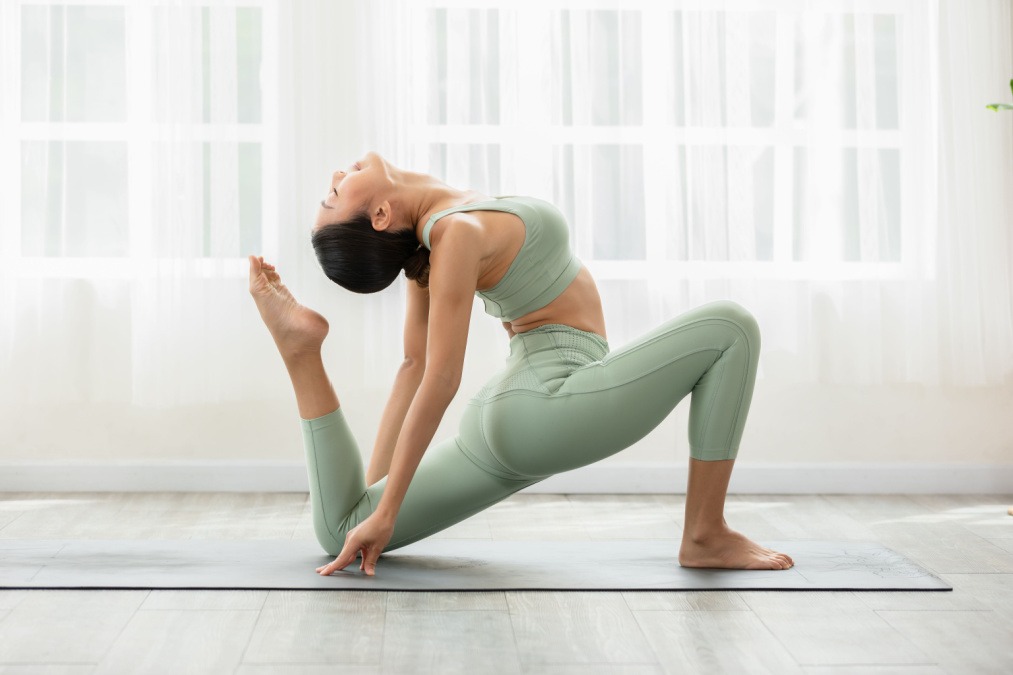Verified on 19/01/2023 by PasseportSanté
A yoga session varies enormously depending on the style that one practices. For example, in yin yoga, everything is focused on relaxation, so there is rarely a need to warm up before the most difficult postures of the class. Conversely, in vinyasa, we will take care to prepare the body well for the most intense moments of the class.
Either way, an ideal yoga session is one that leaves you feeling better at the end than when you started. In addition to this basic principle, we can still distinguish some essential steps and elements of a good yoga session.
Take the time to arrive in your body
When you do yoga in the morning, the body is still rusty and sleepy. If you practice more in the evening, tensions have had time to build up throughout the day.
In any case, before throwing yourself into the postures, it is essential to take the time to arrive in your body, to feel it and to ask yourself how you are doing at the moment T. This phase allows you to move more in consciousness afterwards and thus benefit to the maximum from the benefits of yoga.
Meditation
A few minutes of meditation at the beginning of the session allow you to begin to connect with your interior. It can be a guided meditation, a body scan or heart coherence, it doesn’t matter the technique as long as it suits you.
The goal is not to chase the thoughts that come into your head, but rather to welcome them without judgment and let them go quietly. If the brain is racing, we concentrate on our breathing, on the path that the air takes when entering and leaving, on the small movements of the body during inspiration and expiration.
It is completely normal when you start a yoga session to have trouble meditating and to lose concentration after a few seconds sometimes. Keep coming back to your breath, with time and practice the meditation phases will gradually lengthen.
pranayama
Pranayam is a word in Sanskrit (the sacred language of yoga) which means “breath control”. The purpose of this practice is to strengthen the connection between body and mind, so it is ideal at the beginning of a yoga session.
There are several kinds of pranayama exercises with different virtues, here are the best known:
Nadi Shodhana or Alternate Breathing
This involves breathing alternately through one nostril then the other. The right hand is positioned facing the face, the thumb closes the right nostril and the ring finger the left nostril. The index and middle fingers are placed at the level of the 3rd eye, between the eyebrows. Close the right nostril, inhale through the left, then close the left and exhale through the right. And vice versa.
Shitali Pranayama or cooling breath
Here, it is necessary to roll up the tongue so that it forms a pipe, and to take it out about three quarters. Inspiration is done through the tongue, as if it were a straw.
Ujjayi Pranayama or Victorious Breathing
It is practiced with the mouth closed. We therefore inhale through the nose and also exhale through the nose, but slightly retracting the back of the throat. This breathing usually causes a rather raspy sound when exhaling. Some compare it to the rolling waves, others to the emblematic breathing of Darth Vader!
Kapalabhati Pranayama or Breath of Fire
This is one of the most technical breaths. We breathe in slowly and deeply through the nose, then we also breathe out through the nose, but in a jerky and sonorous way, each time bringing the navel closer to the spine. The inspiration is therefore passive and silent while the expiration is short and active.
Bhastrika Pranayama or Bellows of the Blacksmith
Bhastrika combines ujjayi and kapalabhati. Except that unlike the latter, the inspiration is as active and jerky as the expiration. It is therefore necessary to inhale deeply and fully and exhale as if blowing your nose. After 30 seconds to 1 minute of repetitions, you can continue with 30 seconds to 1 minute of air retention (lungs full).
Bhramari Pranayama or Bee’s Breath
Very simple to perform, this technique is particularly appreciated by children. We first place the hands behind the pavilions of the ears so as to form a sound box.
Then, we inhale by taking in as much air as possible and exhale through the nose, mouth closed (but jaw relaxed) producing a buzzing sound. We concentrate on the sound until there is no more air to expel.
The mantras
A mantra is a syllable or set of words that can be repeated in one’s head or orally, in order to invoke its energies. It can be a formula in Sanskrit, according to the yogic tradition, but also a sentence in one’s own language. Some mantras are spoken and others sung. Starting your yoga session with a mantra is a powerful tool for connecting with your interior which allows you to set an intention for your practice (for example: letting go, regaining energy, chasing away a blues, releasing anger , etc.).
The best known of all mantras is undoubtedly the sound “OM” whose objective, according to Hinduism, is to reach the ultimate level of concentration and meditation, that of union with the Divine.
A targeted warm-up
In the case of a dynamic yoga practice, a targeted warm-up is almost a must. The goal is to prepare muscles and joints to achieve certain postures and progress.
For example, if the session revolves around the posture of the bridge, we will take care to warm up the shoulders, to practice postures of openings of the heart and back flexions of the back.

Challenge yourself and listen to yourself
An ideal yoga session should allow you to challenge yourself at the peak of practice, to surpass yourself to create satisfaction and pride. This can result in postures held longer than usual, in a more sustained rhythm or even in the realization of postures that one appreciates little. Because the less we love them, the more our body must need them!
Be careful, however, not to go into sequences or infeasible postures at the risk of hurting yourself, discouraging you and denigrating you.
If we can completely push the feeling of discomfort in certain postures, we will never go as far as acute pain. The ideal session must offer a perfect balance between surpassing oneself and listening to oneself.
Return to calm
After having chained the standing postures, it is good to slow down the rhythm gradually until the final relaxation. The body being “warm”, it is the moment to include stretching and to go down again towards postures on the ground.
For example, if you have previously practiced many chair poses that put a lot of strain on the quadriceps (thigh muscles), you can stretch the area using the hero pose (sitting between your heels with the possibility of lying down on the ground or on the elbows) or by bringing the heel towards the buttock in the posture of the sphinx.

This cool-down phase is also a perfect transition to savasana, the final relaxation posture common to all yoga classes.
Savasana
Savasana means “dead body” in Sanskrit. This is the ultimate relaxation posture found in every yoga class.
It is practiced simply lying on the ground, arms along the body, palms facing the sky. There’s nothing you can do except let the natural breathing come back gradually, without trying to control anything.
During savasana, some imagine that they are floating, that they are levitating, others prefer to see themselves very heavy, as if melting on the carpet, becoming one with the Earth. Everyone has their own style, the main thing being to offer this moment of stillness to their body and mind. A moment to record and digest all that we have accomplished during the practice.
Was this article helpful to you?
We wish to say thanks to the writer of this article for this outstanding content
Yoga session: how does the ideal session take place?
Discover our social media profiles , as well as other pages related to it.https://nimblespirit.com/related-pages/

